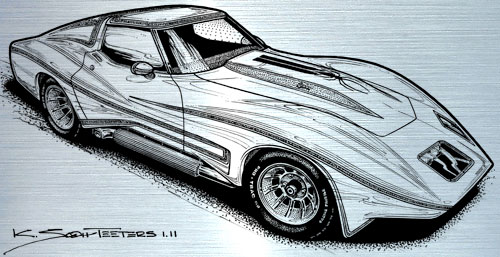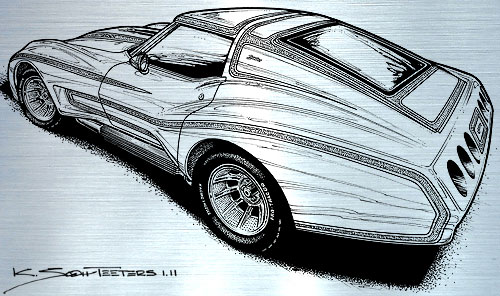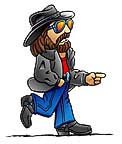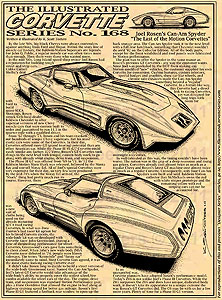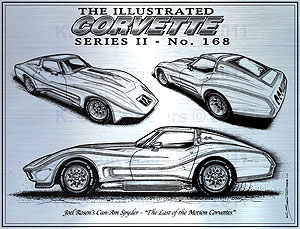The Last of the Motion Corvettes
By the late ‘60s, big-block Chevys were always contenders against anything from Ford and Mopar. Within the story line of muscle car history, the Baldwin-Motion Supercars are legends. For John Q. Public, a regular muscle car was often times more than enough. Then there were those who wanted more.
In the mid-’60s, Long Island speed shop owner Joel Rosen had areputation for building tough street and strip cars. Unlike Carroll Shelby’s deal with Ford to build quasi-SCCA Mustangs, Rosen struck with local dealer Baldwin Chevrolet to offer supercar versions of new Chevy muscle cars that were custom built to order and guaranteed to run 11.5 in the quarter-mile with a qualified driver.
From ‘67 through ‘73, Rosen and his team cranked out hundreds of unique Chevy supercars. But his most exotic cars were some of the Corvettes. In their day, Corvettes offered more GT (grand touring) potential than any other American car. While the Phase III SS-427 Corvette could easily smoke any factory 427 Vette, Rosen’s GT Corvettes took things to the next level with unique, custom body work to go along with already stout engine, drive train, and suspension.
The Phase III GT was offered from ‘69 to ‘71. In ‘72 the Baldwin-Motion Maco Shark was released, followed by the Manta Ray and one-off Moray Eel. All of Joel’s special Corvettes were very expensive for their day, so very few were produced. By the mid-70s when the Moray Eel arrived, the “Shark” thing had pretty much run its course. However, there was a new suit of cloths being used on the already menacing SCCA road racing Corvettes. In what was Zora Duntov’s last racer kit option for his beloved Corvette racers, the wide-body kit was co-developed with Corvette racer John Greenwood. During a time of diminishing performance for street Corvettes, Greenwood’s cars gave fans something to cheer about. When John’s new wide-body IMSA Corvette racer debuted in ‘74, people were blown sideways. The terms “Batmobile” and “funny car” immediately came to mind. Most Corvette fans agreed, it was the most exotic-looking racing Corvette ever!
It didn’t take Rosen long to decide to build a street version of the wide-body Greenwood racer. Named the Can-Am Spyder, Joel’s latest GT Corvette would take advantage of the wide-body’s ability to properly cover the widest wheel/tire combo available for street cars of the day. The engine, drive train, and suspension was standard Motion Performance gear, plus a Hone Overdrive that allowed the engine to loaf along at highway cruising speed for better gas mileage. Rosen’s first Phase III GT featured a fastback rear window to open up the back storage area. The Can-Am Spyder took it to the next level with a full rear hatchback, something that Chevrolet wouldn’t do until ‘82 on the Collector Edition. All of the body parts, except for the front windshield and roof panels were fabricated by Motion performance.
The plan was to offer the Spyder in the same manor as Rosen’s previous GT Corvettes – any way the customer wants. Since Joel was precluded by the DOT from making any Motion-modified “new” vehicles, the customer supplied his own Corvette for conversion. Custom features, custom interiors, special badges and graphics, show car-like wheels, and chrome side-exhausts made the Can-Am Spyder something beyond a “regular” Corvette. In a Ferrari-like way, this Corvette had a direct link to racing Corvettes, yet was designed for long trips with room for overnight necessities.
As well-intended as this was, the timing couldn’t have been worse. The nation was in the grip of a deep recession and rising gas prices. Corvettes already cost almost twice as much as a regular Chevy and Rosen’s latest GT machine cost almost twice as much as a regular Corvette. Consequently, only four Can-Am Spyders were built and sold. Baldwin-Motion collector Dan McMichaels owns the red with white stripes prototype and the remaining yellow with red striping cars can not be accounted for.
In an unexpected way, Corvette planners have adopted Rosen’s performance model. Today’s Z06 is not unlike Joel’s Phase III Corvettes. While the ZR1 surpasses the Z06 and does have unique, dedicated body work, it doesn’t take its appearance to a unique extreme the way Rosen’s GT Corvettes did. The C6 may be with us for a few more years. Plenty of time for a Phase III GT version.
Scott
PS – Prints of the above article are available HERE.
We also have a Laser-Etched version of the Motion Can-Am Spyder Corvette
Check out our full range of Baldwin-Motion Phase III Corvette, Phase III GT Corvette, Manta Ray Corvette, and Moray Eel Corvette art prints HERE.


